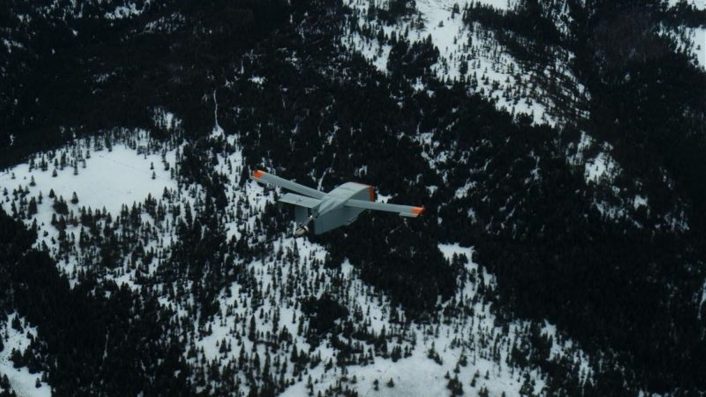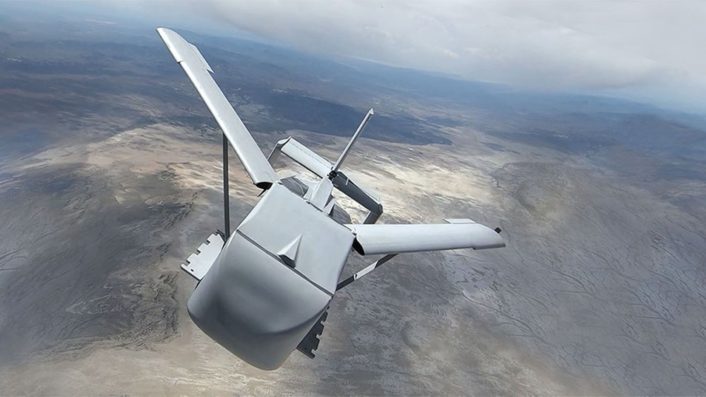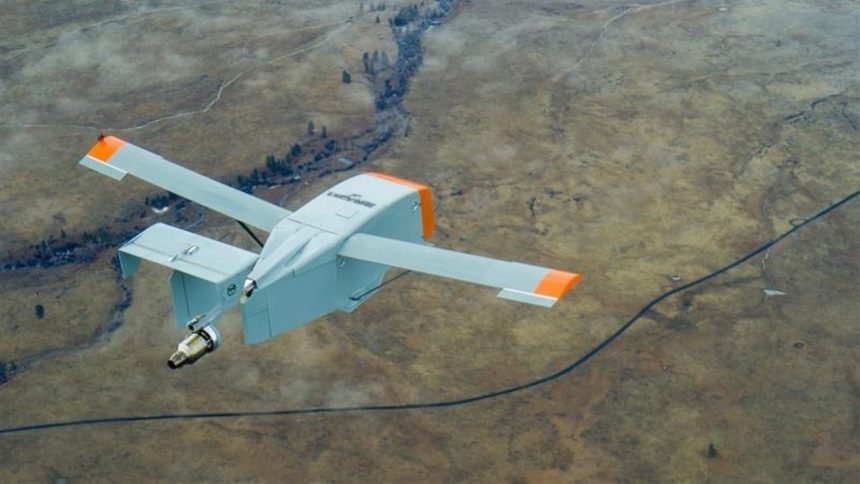The turbine-powered variant offers ten times the range of the original Grasshopper autonomous glider at a fraction of the cost of the manned platforms.
DZYNE Technologies, the company that developed the Grasshopper autonomous glider meant to deliver cargo in contested environments, successfully tested a turbine-powered Long-Range Grasshopper with “10 times” the range of the original system in late 2024, at the Dugway Proving Ground in Utah and the Pendleton UAS Range in Oregon. The original Grasshopper, a pure glider with no onboard propulsion, can reach “tens of miles,” while both systems have a payload capacity of 500 pounds.
In a statement and images shared with The Aviationist, the company revealed that the Long-Range Grasshopper is actually what was previously described as Dragonfly, where the latter designation was used during development.
“Dragonfly is the program name given for development purposes. Long-Range Grasshopper is the final product name once we complete the flight test efforts and validate the technology. Dragonfly and Long-Range grasshopper are the same vehicle, but named differently throughout the development process,” said DZYNE Technologies’ director of marketing Trisha Navidzadeh.
The Air Force Research Laboratory (AFRL) said in a Sep. 2024 video that the Dragonfly variant began development following requests of an “increased range” version by “multiple customers,” after it was “operationally deployed.” Air and Space Forces Magazine further said that the longer-range variant is scheduled to debut by early-2026.

Tests of turbine-powered Long-Range Grasshopper
The unspecified number of test flights in Utah and Oregon “showcased the Long-Range Grasshopper’s robust capabilities,” where “the vehicle deployed and safely separated from the host aircraft, transitioned to fixed-wing flight, successfully air-started its onboard jet engine, flew under power, and executed a precision landing at the intended landing zone,” said the company.
This demonstrated “its ability to meet mission critical performance standards in contested environments.” The precision landing may have been in parachute recovery mode, as was also seen in the September 2024 AFRL video. It is not clear if the Long-Range Grasshopper carried any mock cargo payload for testing purposes.
The type of carrier aircraft was not identified neither in the September 2024 AFRL video nor the subsequent tests towards the end of the year previously revealed by DZYNE. However, the video released when announcing the testing of the Long-Range Grasshopper, shows the drone being launched from what appears to be a Short C-23 Sherpa used for the testing.
Design configuration
The new images show the configuration of the air-breathing turbine engine, which is placed right under the vertical stabilizer, itself mounted on a single tail boom on the top fuselage, separate from the rest of the vehicle’s body. AFRL said in September 2024 that test data from its Aerospace Systems Directorate was used to select the type of small turbine engine that would power the Grasshopper.
AFRL eventually supplied two small engines to DZYNE for “fitment and bench testing,” examining whether the powerplant sat well with the airframe and structure. The engine seen in the latest photographs could be one of those power plants.
The wing-configuration of the Long-Range Grasshopper has the same folding wings of Grasshopper, although one can see two struts supporting the wings similarly to high-wing light aircraft. The mechanism can be made out clearly in the in-flight image of the original Grasshopper glider.

Future
Dzyne or AFRL have not revealed the U.S. Air Force units or commands, either the Air Mobility Command (AMC) or the AFSOC, that ASF initially reported to have received “several dozen” units of the Grasshopper. The interested customers who requested a longer-ranged variant after the Grasshopper was “operationally deployed” are also not known.
The company nevertheless highlighted the close collaboration with the AFRL that “accelerated the development timeline, enabling rapid flight testing and immediate user feedback.” This close cooperation between DZYNE, AFRL and the final users enabled “immediate customer feedback,” as well as “rapid flight evaluations” and “real world employment” of the Grasshopper, leading it to “rapidly transition” from a “research effort to a fielded capability,” AFRL said.
The Grasshopper’s “low-cost manufacturing techniques” limit the production cost to about $40,000 per vehicle, offering “asymmetric capability” to cargo delivery. The single use vehicle therefore also has immense utility in HADR (Humanitarian Assistance Disaster Relief) roles.
The press release from DZYNE quoted its CEO Matthew McCue, who said the “Long-Range Grasshopper represents a game-changing capability for accurate and survivable payload delivery in contested logistics environments.”









